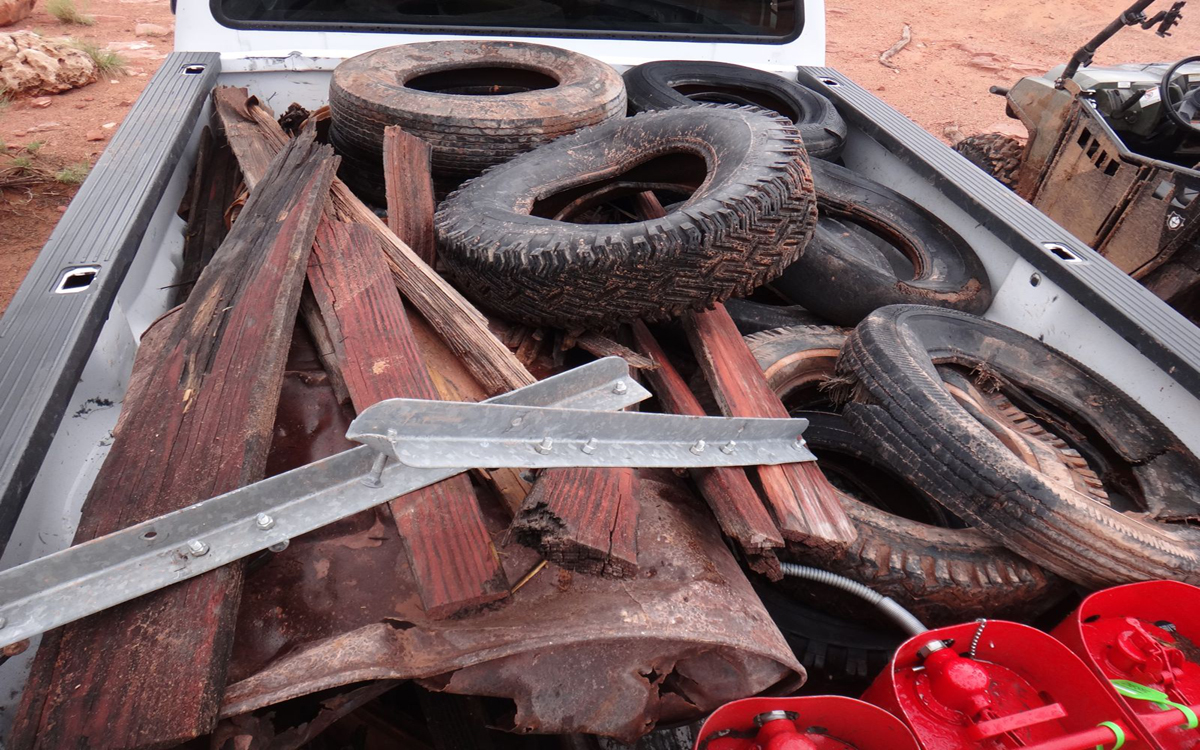
Over a mid-September weekend, some of the most heavily used (and littered) portions of the Grand Canyon’s South Rim will get their annual tidy-up. But collecting trash from ledges that dangle some 5,000 feet over a massive hole in the earth is no task for your average sanitation crew. Instead, the park’s Preventive Search and Rescue Program (PSAR) will issue a special-use permit to the Arizona Mountaineering Club (AMC), about 50 of whose member-volunteers will rappel over the canyon’s edge to collect hundreds of gallons of plastic bottles, bags, sunhats, coins, and snack wrappers.
The cleanup does more than ameliorate a serious eyesore in an otherwise spectacular landscape. “Trash puts a [strain] on the natural environment that we really see on our wildlife. Specifically birds, but also megafauna like bighorn sheep and deer,” says Ben Cooper, who supervises Grand Canyon’s PSAR and also offers logistical support to AMC’s garbage roundup. With visitation at the park up 33 percent over the last three years, and hitting 6 million visitors in 2016, that strain is only fixing to get worse. With few skilled on-staff climbers and a stagnant budget, much of which goes toward educating tourists on safety and providing imperiled hikers with emergency services, Cooper says, “We need to engage our community partners” in the cleanup.

Trash that the CAC hauled out of the Toroweap backcountry area | Photo courtesy of the Coalition of American Canyoneers.
The poster child for the urgency of these efforts? The endangered California condor. Its numbers across Arizona and Utah have slowly climbed from zero to 74 over the past 30 years. But between 2007 and 2011, at least two condors died from eating the coins that some tourists toss into the canyon for luck. Coins cause blockages in the birds’ guts, causing them to eventually starve to death—“A gruesome way to go,” as park wildlife biologist Miranda Terwilliger puts it. But at least as concerning to her, as far as types of garbage go, is plastic, much of which is also microtrash: bottle caps, rings from around bottle necks, sandwich bags. “It’s the stuff,” says Cooper, “that gets blown around, and people just go, ‘Meh, that’s no big deal.’”
According to Terwilliger, though, that’s the stuff that…





